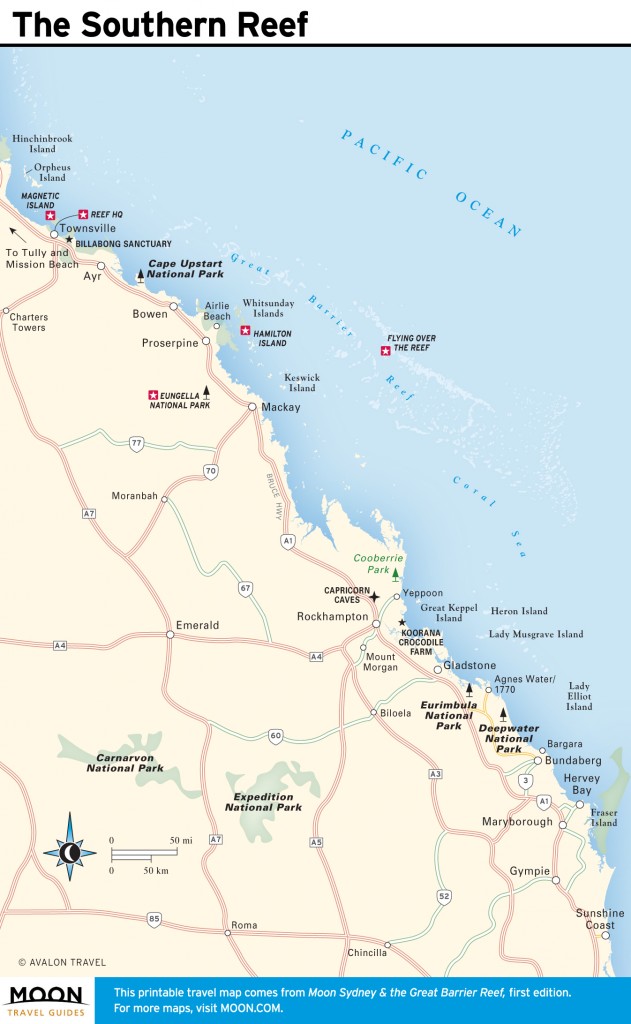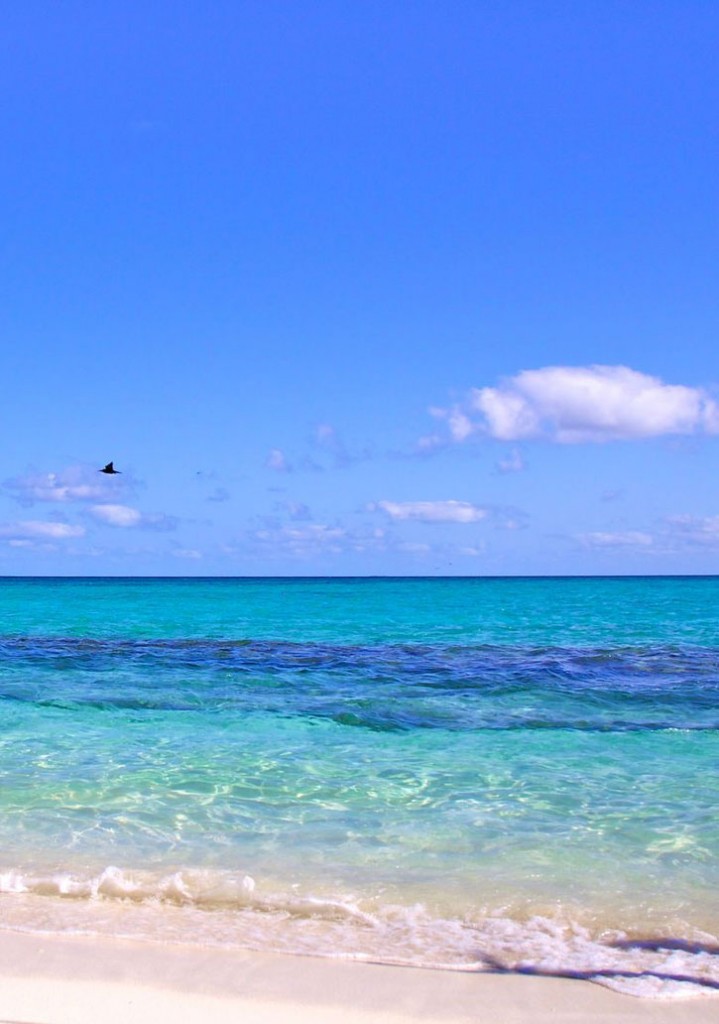With the Great Barrier Reef stretching over 2,000 kilometers and covering an area of around 348,000 square kilometers, to go to Australia and “see” the entire Great Barrier Reef is practically impossible. Even marine biologists who live and work on the islands will never get to experience it all. So, where to start? Begin at the beginning: The reef officially starts near Bundaberg, with some small islands around Lady Elliot and Heron Islands, and that is a mere four hours’ drive north from Brisbane, or a couple of hours’ flight from Sydney.
It can’t be stressed enough just how large a country Australia is.The southern reef region, on land, is still unexploited by visitors. It is mostly arable land (sugarcane and fruit, together with cattle, are the farming mainstays), and there are plenty of national parks—wild, uninhabited, and rarely visited bushland and forest that is home to an amazing variety of unique flora and fauna.The cities and towns dotted along the coast are mostly industrial and not geared up for mass tourism, although superb visitors centers guide you to nearby attractions and book visits to the reef. North of the Tropic of Capricorn, tourism becomes more of an industry, and you’ll find proper, if small, beach resorts bustling with activities that suit the entire family. But on the whole, the region of the southern reef is a combination of excellent and not overrun access to some spectacular islands along the reef and a coastline that is very quiet and laid-back, with touristy attractions far and few between, spaced out along quite considerable distances.

The Southern Reef
It can’t be stressed enough just how large a country Australia is. Trying to even make a dent in all its attractions requires intensive planning and time. While you can do things on a budget, when time and budget are limited the planning is even more important, and you have to accept that you simply will not be able to see it all.
The key is to figure out your priorities. Queensland and the reef offer such a huge variety of activities that you will probably have to choose and, again, set priorities.
If you are an avid hiker, then the southern reef region is a great place for you, especially if you combine the hiking with bird-watching. You’ll never want to leave. The national parks all offer nature walks, tracks that are well signposted at every parking spot along the road, and they often come with picnic facilities. If you are a serious hiker, then maybe the Thorsborne Track on Hinchinbrook Island is for you; you will get dropped off on the island and walk for four or five days, camping as you go. You can fly from Sydney up to Cairns or Townsville and reach the island from there.

The beautifully clear water at Heron Island. Photo © Anna Orlyanskaya/123rf.
Are you a keen diver or a closet marine biologist? Then opting for a secluded and not too expensive island resort where you can spend most of your time and money underwater would be best. Fly out to Heron Island and book a set of dives. You can fly in and out via Gladstone and need not set foot on the mainland for long.
The best way to get around the various places along the southern reef is either by flying in and out (most places do have small regional airports) or driving.If, however, you are a couple or family with a variety or even a clash of interests, then either make camp in a more bustling resort such as Airlie Beach and take day trips from there, or, quite honestly, move on to the northern reef region and place yourself in Cairns or Port Douglas, from where you can reach many more activities and sights in a shorter space of time than is possible anywhere along the southern reef.The best way to get around the various places along the southern reef is either by flying in and out (most places do have small regional airports) or driving. To drive the entire coast, from Bundaberg to Mission Beach, visiting all the points covered in this chapter, would take a bare minimum of two weeks, as the distance is around 2,500 kilometers and excursions to islands always take at least one entire day, so depending on your stops, calculate around three or four weeks to do it all.
Bear in mind that the drive crosses the Tropic of Capricorn and the tropics, so the weather is good pretty much all year round, but the rainy season in the southern summer (November to February) is quite humid, and some of the national parks get blocked off due to flooding. The dry and more popular season, roughly between May and October, often sees inflated accommodations prices and more visitors. You can swim in the sea all year round, although you may have to stay within the stinger nets during jellyfish season (October to May). If you come for the hiking, you may want to opt for the cooler in-between months of August or March.
Excerpted from the First Edition of Moon Sydney & the Great Barrier Reef.